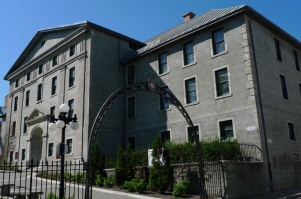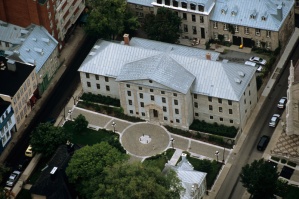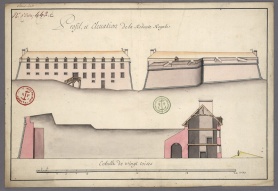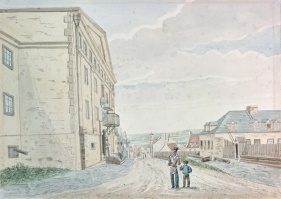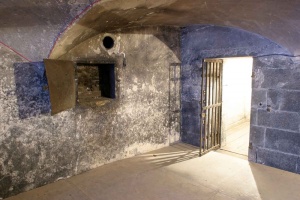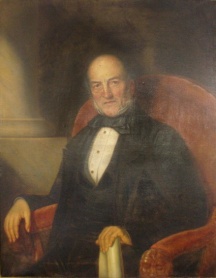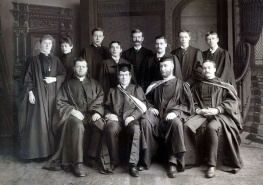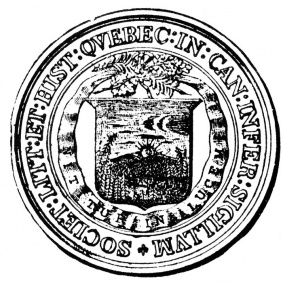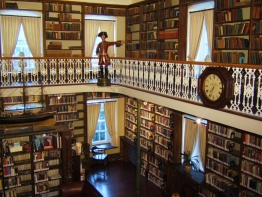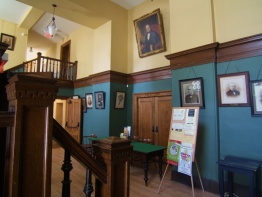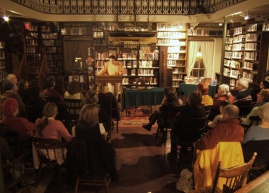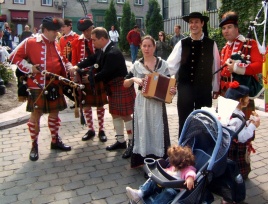Morrin Centre
par Donovan, Patrick
The Morrin Centre is an English-language cultural centre in Quebec City. Its history illustrates changes in relations between the city's French and English speakers over the past two centuries. The neo-Palladian building is a national historic site of Canada, having once housed a city prison, a Presbyterian-run college, and the oldest learned society in the country. Over the past few decades, the building has taken on symbolic importance for many in the region's English-speaking minority, who have spearheaded projects to preserve and develop it.
Article disponible en français : Centre Morrin à Québec
Description of Site
The Morrin Centre is located at 44, Chaussée des Écossais (formerly rue Saint-Stanislas) in the heart of the historic district of Old Quebec. It is a four-storey neo-Palladian building laid out in a rectangular plan on a slight slope.
The site’s significance rests on architectural, historical, and intangible values. Architecturally, the building is an early example of British classicism in Quebec City, while also incorporating some French influences. It illustrates the work of architects François Baillairgé and Joseph-Ferdinand Peachy. The site’s historical relevance rests on its past as a prison, college, and learned society library. More recently, the building has taken on symbolic value for an important part of the region’s English-speaking minority.
Redoute Royale and Common Gaol
The Morrin Centre is located on the former site of the Redoute Royale, a 1712 defensive structure that was later used as a prison. By the late 18th century, this building had fallen into disrepair. The members of Quebec’s grand jury called for it to be demolished and replaced with a new prison on the site.
The current building was designed by Quebec architect François Baillargé and built between 1808 and 1813. It exemplifies the neo-Palladian style favoured for public buildings in Canada between 1800 and 1820. This style is characterised by a symmetrical façade, a large pediment, and a central part that projects forward. Although this is an early example of British classicism in Quebec City’s architecture, Baillargé nevertheless added a French touch by using a scheme of proportions developed by architect Philibert de l’Orme. (NOTE 1)
The interior of the gaol was the first in Canada to reflect the ideas of British prison reformer John Howard. Unlike older prisons with large common cells, the new prison had a series of cells laid out around small inner rooms. This allowed for the division of prisoners according to their crimes. Howard’s emphasis on rehabilitation through work gradually replaced earlier ideas of incarceration focused solely on punishment. (NOTE 2)
Several well-known prisoners spent time in this gaol. Philippe Aubert-de-Gaspé, author of Les Anciens Canadiens, was imprisoned for debt. The prison was also active at the time of the Patriot rebellions of 1837-38 when many were imprisoned for sedition, namely journalist Etienne Parent.
The prison soon became overcrowded and Howard's reforms could not be properly applied. A new municipal gaol was built on the Plains of Abraham and prisoners were transferred there in 1867.
Transformation of the Common Gaol
The building was transformed by architect Joseph-Ferdinand Peachy to house a college and library. A few minor changes were made to the exterior, including removal of the iron balcony from which condemned prisoners were hanged. However, the interior of the building was almost entirely changed. Cell partitions and ceilings were removed to open up imposing spaces, including two spacious rooms at the extremities of each wing. Ornamental balconies supported on wrought-iron columns lend a late-19th-century atmosphere that contrasted with Baillargé’s original sober classicism. Curiously, two cellblocks were preserved on the ground floor of the building’s northern wing. Morrin College and the Literary and Historical Society of Quebec moved to their new quarters when the transformations were completed in June 1868.
Morrin College
Morrin College, the first English-language institute of higher education in Quebec City, existed between the years 1862 and 1902. It was founded at the initiative of Dr. Joseph Morrin, former city mayor and prominent doctor. The College initially occupied rooms rented from the Masonic Temple before moving into the remodelled gaol building.
Although officially open to all, Morrin College was largely managed by Scottish Presbyterians and targeted English-speaking Protestants. It attracted few Catholics. The school’s founder and Principal for 31 of its 40 years was the Reverend John Cook, who preached at Saint-Andrew’s Church across the street. In his inaugural address, he stated that Morrin College would fill a niche that the existing Laval University could not fill because “being exclusively Catholic, and its courses given almost entirely in the French language, [Laval] can never be extremely useful to the Protestant and English-speaking youth of the city.” A Faculty of Divinity within the school formed a total of 24 Presbyterian ministers. Some have argued that the College was a bulwark intended to protect Quebec’s Protestant population from the influence ofthe majority. (NOTE 3)
However, the school offered more than religious education. A Faculty of Arts and a short-lived Faculty of Law had a wider appeal. Morrin College was affiliated with McGill University from 1863 to 1900. A total of 46 students graduated with a McGill degree. The school was also a local pioneer in terms of women’s education, awarding the first B.A. to a woman in the region in 1889. A few people who later went on to illustrious careers taught at the College, namely Dr. Edwin Hatch and James Douglas, Jr.
Morrin College struggled from the very beginning. In addition to persistent financial problems, the declining Anglo-Protestant population of Quebec City had always been too small to justify an institution of its kind. The school discontinued regular classes in 1902, but remained owners of the building until 1987. The board of governors of Morrin College still exists today and continues to administer a fund for the purposes of education. (NOTE 4)
Literary and Historical Society of Quebec
Founded by the Earl of Dalhousie in 1824, the Literary and Historical Society of Quebec was the first proper learned society in the country. After several moves and two fires, the Society settled into the northern wing of Morrin College in 1868.
Its original aims were diverse and had a national scope. The Society gathered historical documents about Canada and republished many rare manuscripts. Research in all fields was actively encouraged. Scholarly essays were published regularly in a series of Transactions, some making a significant contribution to the advancement of knowledge. It also managed one of the country’s early natural history museums. Although Anglophones were always more numerous among the membership, many prominent Francophone intellectuals of the day were drawn to the Society.
Over the years, the Society played a part in founding institutions that would take over many of its traditional roles. It fostered the creation of the Public Archives of Canada (now Library and Archives Canada). It was also active in the preservation of Canada’s built and natural heritage, helping to save the Plains of Abraham from developers and eventually fostering the creation of the National Battlefields Commission and the Historic Sites and Monuments board of Canada. It is primarily for these reasons that the activities of the Society were designated a national historic event by the Federal Government in 1984. (NOTE 5)
In the twentieth century, the Society gradually changed from a learned society to a community library. It continues to provide access to general-interest English-language books as a complement to the public library network’s largely French-language collections. Recently, the Society has reassessed its mission and is now the main promoter behind the Morrin Centre project.
Many of the objects acquired by the Society over the years confer additional heritage value to the property. These include an early painted wooden statue of General James Wolfe from the 18th century, prominently displayed in the library. The library also includes a desk that once belonged to politician George-Etienne Cartier and historian Benjamin Sulte.
From Real Estate to Heritage
The transformation of the building from a prime slice of real estate into a heritage site and cultural centre happened gradually. The climate was not ripe for such a project in the 1960s and 1970s. Other heritage projects of the period, such as Place Royale in Quebec’s lower town, sought to replace architecture built after the British conquest with buildings reminiscent of New France. It was not until the symbolic destruction of the Van Horne Mansion in Montreal that the notion of heritage in Quebec gradually came to embrace 19th century architecture.
This was a time when Quebec sought to assert its Francophone character to ensure its economic and cultural vitality within a largely English-speaking continent. It was the climate of the cultural and economic emancipation of Quebec’s French speakers that also played against the idea of an English-language cultural centre. A tiny minority took this to extremes, such as the Argentinean student who set fire to the library’s Wolfe statue in 1966 as an act of solidarity with radical Quebec nationalists and simultaneous protest of British presence in the Falkland Islands. (NOTE 6) This political climate caused the Society, and some would argue many of the city’s English-speaking population (NOTE 7), to retreat into a shell. For many years, there was no sign identifying the library on the outside of the building.
In the 1970s, the building was put up for sale, spurring nearly two decades of uncertainty about the site’s future. Architectural drawings proposed dividing the building into condominiums. Other proposals were more respectful of the site’s heritage values, such as Luc Noppen’s plan to create a museum co-op in 1981. Nevertheless, the Morrin College board remained unsatisfied with offers from potential buyers and were concerned about the future of the Society’s library. (NOTE 8)
The 1970s was a time when a new consciousness among the province’s English speakers was developing, as they sought for ways to adapt to new realities. Mass migrations out of the province of English-speaking Quebeckers gradually brought those who stayed together; the boundaries separating previous ethno-religious identifications (Irish-Catholic, Protestant) began to yield to a broader “Anglophone” [English language community] cultural identity. New interest groups such as the province-wide AQEM (Anglo Quebec en Mutation) were formed. AQEM became interested in the threatened building, considered purchasing it and drew up petitions to the National Assembly for government intervention. This struggle was later taken on by Quebec City’s English language community group VEQ (Voice of English-speaking Quebec) in the 1980s.
As is often the case in the field of heritage, the threat of the building’s sale spurred the government into action. The building was classified in Quebec’s register of cultural properties on January 23, 1981. Later that year, on November 13, it was designated a National Historic Site by the federal government. The heritage values justifying its importance were largely architectural and linked to the prison period.
The building was nevertheless sold to private developers related to Morrin College board member Wilfred Rourke in 1987. The sale drew criticism from community groups, which were voiced at a parliamentary commission. (NOTE 9) The city eventually became interested in purchasing the building as a conservation measure in 1989. Controversy continued when the company resold the building to the city at more than twice what they had paid. (NOTE 10)
Restoration and Revitalization
The 1990s marked a sea of change in attitudes towards English-speakers, gradually seen as an integral part of a plural Quebec. The city’s mayor, Jean-Paul L’Allier, championed the cause of English-language cultural centre and worked with local English-language community organisations to develop a project that would showcase the past contribution and present-day vitality of the English-speaking population. The city also financed restoration of the exterior shell in 1992 and 1993.
In the early years of the new millennium, the Literary and Historical Society of Quebec took the reins of the project. The city transferred ownership to the Society in 2004 and interior restoration of the building began. The Morrin Centre was officially inaugurated in 2006 and now serves a cultural centre that demonstrates the tangible presence of a living English-speaking community in Quebec City.
Patrick Donovan
PhD Candidate, Université Laval
Former Executive Director, Morrin Centre
NOTES
1: Nathalie Clerk and Marc de Caraffe, "L'ancienne prison de Québec ('Morrin College') 44, rue Saint-Stanislas, Québec, Québec," Historic Sites and Monuments Board of Canada Agenda Papers 2 (1989)., 15-17.
2: Ibid.,11.
3: See Laura Isobel Bancroft, “Morrin College: an historical and sociological study,” BA Thesis, Université Laval, 1950.
4: This section based on the executive summary of Patrick Donovan, "Morrin College: 1862-1902," supervised research project for MA, Université de Montréal, 2002.
5: Marsha Hay Snyder, "The Literary and Historical Society of Quebec," Historic Sites and Monuments Board of Canada Agenda Papers 51, (1984): 347-64.
6: Michel Truchon, “Un compromis avec les séparatistes du Québec,” Le Soleil, May 29, 1966.
7: See Louisa Blair, The Anglos: The hidden face of Quebec City. 2 vols. Quebec: Éditions Sylvain Harvey, Commission de la capitale nationale du Québec, 2005.
8: BAnQ, Minute books of the Literary and Historical Society of Quebec; Oral testimonial by long-time board member David F. Blair given to Louisa Blair in March 2010.
9: Assemblée nationale, “Auditions et étude détaillée du projet de loi 254 – Loi modifiant l’acte pour incorporer le Collège Morrin, à Québec," Journal des débats, Commissions parlementaires, 59, June 21, 1989.
10: Oral testimonial by long-time board member David F. Blair given to Louisa Blair in March 2010.
BIBLIOGRAPHY
"Early Publications of the Literary and Historical Society of Quebec, Virtual Library, 1824-1924." Literary and Historical Society of Quebec, site consulted on 04/03/10. http://transactions.morrin.org/.
“Énoncé d’intégrité commémorative: Lieu historique national du Canada du Morrin College/Ancienne-prison-de-Québec." Unsigned draft document. Parks Canada, Unité de gestion de Québec, 2006.
Bancroft, Laura Isobel. “Morrin College: an historical and sociological study.” BA Thesis, Université Laval, 1950.
Bernatchez, Ginette. “La Société littéraire et historique de Québec : 1824-1890.” MA Thesis, Université Laval, 1979.
Blair, Louisa. The Anglos: The hidden face of Quebec City. 2 vols. Quebec: Éditions Sylvain Harvey, Commission de la capitale nationale du Québec, 2005.
Clerk, Nathalie, and Marc de Caraffe. "L'ancienne prison de Québec ('Morrin College') 44, rue Saint-Stanislas, Québec, Québec." Historic Sites and Monuments Board of Canada Agenda Papers 2, (1989): 9-26, EX1.
Donovan, Patrick. "Morrin College: 1862-1902." Supervised research project for MA, Université de Montréal, 2002.
Fyson, Donald. Magistrates, Police and People: Everyday criminal justice in Quebec and Lower Canada. Toronto; Buffalo: Published for the Osgoode Society for Canadian Legal History by University of Toronto Press, 2006.
Gobeil-Trudeau, Madeleine et al. "Dossier d'inventaire architectural du Morrin College ou Ancienne Prison de Québec." edited by Ministère des affaires culturelles direction générale du patrimoine. Quebec, 1978.
Hay Snyder, Marsha. "The Literary and Historical Society of Quebec." Historic Sites and Monuments Board of Canada Agenda Papers 51, (1984): 347-64.
Additional DocumentsSome documents require an additional plugin to be consulted
Images
-
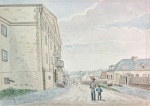 Watercolour of the co
Watercolour of the co
mmon prison aro... -
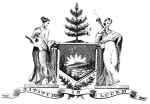 Crest of the Literary
Crest of the Literary
and Historical... -
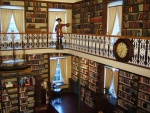 Library of the Litera
Library of the Litera
ry and Historic... -
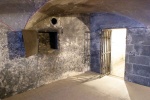 Cellblock from the ol
Cellblock from the ol
d common prison...
-
 Morrin Centre, 2009
Morrin Centre, 2009
-
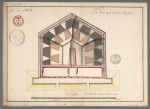 Architectural drawing
Architectural drawing
of the Redoubt... -
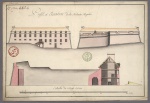 Architectural drawing
Architectural drawing
of the Redoute... -
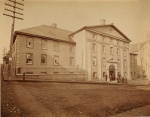 Students outside Morr
Students outside Morr
in College
-
 Morrin College studen
Morrin College studen
ts, c1891 -
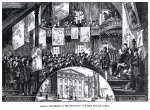 Engraving of the Morr
Engraving of the Morr
in College Hall... -
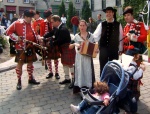 Breton and Scottish g
Breton and Scottish g
roups in front ... -
 Entrance Hall with po
Entrance Hall with po
rtraits of the ...
-
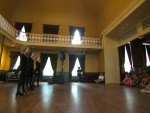 rish dancing show in
rish dancing show in
the restored Mo... -
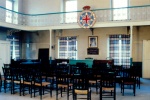 Morrin College Hall i
Morrin College Hall i
n the 1970s at ... -
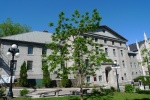 Morrin Centre, 2009
Morrin Centre, 2009
-
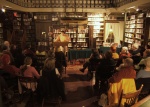 George-Elliott Clarke
George-Elliott Clarke
reads at the l...
-
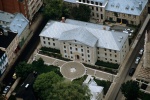 Bird’s-eye view of th
Bird’s-eye view of th
e Morrin Centre... -
 Portrait of Dr. Josep
Portrait of Dr. Josep
h Morrin by Thé... -
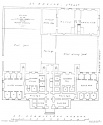 Reproduction of an ar
Reproduction of an ar
chitectural dra... -
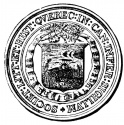 Seal of the Literary
Seal of the Literary
and Historical ...

